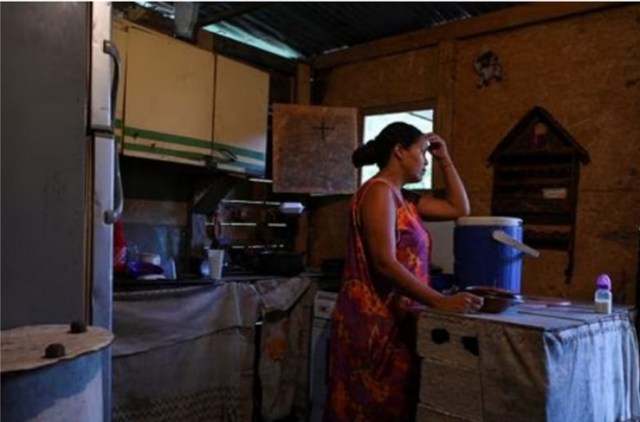
Daily power cuts have returned to west-central Venezuela, shutting air conditioners during a heat wave and hitting factories, households and utilities as poorly maintained thermal plants fail to compensate for weak hydroelectric generation, residents, engineers and analysts said.
By Reuters – Mariela Nava, Tibisay Romero and Vivian Sequera
June 7, 2023
“It is inhumane that in a city like this they cut our power during the hottest hours,” said 42-year-old housewife Mariana Barboza in Maracaibo, where temperatures typically surpass 40 °C (about 104 °F) this time of year. “We have bad nights, kids cry and mosquitoes abound. They are killing us slowly.”
Lengthy power cuts had been avoided in recent years due to lower demand and investments by President Nicolas Maduro’s government in deteriorated power transmission and distribution lines. But outages have returned, even affecting capital Caracas, which has traditionally shielded from interruptions.
Residents said the cuts last at least four hours per day. The OPEC country’s average temperature has risen 4 degrees Celsius this year, figures disclosed by Maduro last month showed.
The hotter weather has reduced water volume in hydro-electric dams while boosting demand for air conditioning, leading to intermittent public water supply, unstable electricity at factories and oil operations and telecommunications black-outs.
In western Zulia state, where Maracaibo is located, some public hospitals have been told to begin operating their own power plants because the regional government cannot secure stable power supply, a source with knowledge of the plans said.
Venezuela’s information ministry and state power company Corpoelec did not reply to requests for comment.
NO WATER, NO POWER
Venezuela’s main power supply, from the massive Guri Dam in the country’s south, often works at reduced rates when water levels are at their lowest ahead of the start of the rainy season in May-June.
In 2019, Venezuela’s grid collapsed, leaving almost the entire country in the dark for four days.
The government has made some investments in transmission lines since then, to avoid a similar crisis, but even some of the most recently installed fuel-powered plants are out of service due to insufficient diesel, delayed maintenance and lack of replacement parts, analysts said.
That leaves the grid at risk of outages when demand surpasses the 12,000 Megawatts (MW) generally produced by the Guri Dam.
In May, daily peak demand reached almost 13,000 MW, according to independent estimates, about two-thirds of the 19,000 MW demanded a decade ago.
“Even being robust, the Guri also gets tired,” said engineer Isnaldo Jimenez from the Association of Electricians and Mechanics in central Carabobo state, referring to excessive demand from hydropower when thermal plants cannot respond to extra need.
State oil company PDVSA, under sanction by the United States, is struggling to meet domestic fuel demand for everything from power to gasoline stations, but even with more fuel supply, thermal plants would not operate at top capacity because the system needs some $15 billion in investment to overcome core problems, said Juan Carlos Rodriguez from consultancy JCR Ingenieros.
The grid’s unreliability has not stopped the government from sharply raising electricity bills for consumers, who have been hoping for rain to shore up hydroelectric supply.
“We cannot catch a breath,” said Maracaibo vegetable seller Augusto Gonzalez, 62. “I arrive in my shop everyday to try to sell something, but if power was cut in the middle of the night, we lose our produce.”
…
Read More: Reuters – Power cuts hit Venezuela’s west, cutting air conditioning during heat wave
…

